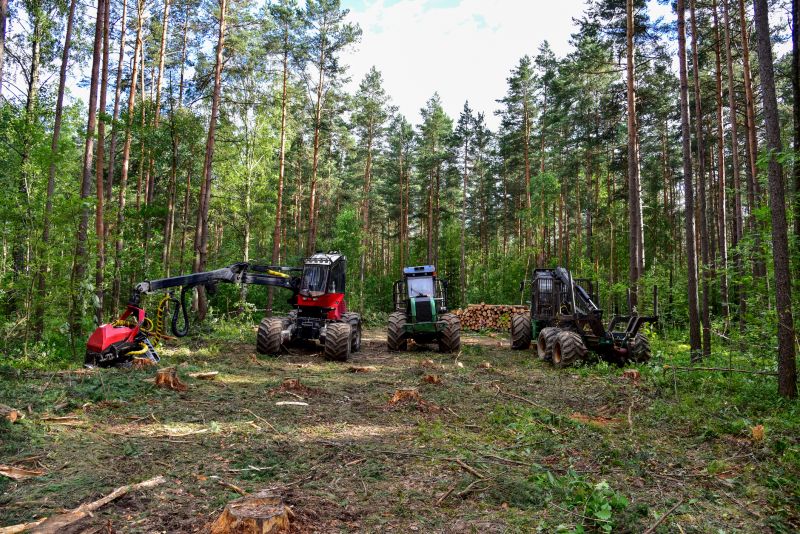Leading Products For Effective Forestry Cleanings
Identify top-rated equipment that helps you perform forestry clean-up tasks faster and with better results.
 Forestry cleaning involves the removal of debris, fallen branches, and other obstructions to maintain the safety and efficiency of forest management activities. Proper cleaning tools and equipment are essential for clearing pathways, preparing sites for planting, or managing overgrown areas. These products help reduce hazards, improve access, and support sustainable forestry practices. Whether working with small-scale land management or large forest operations, selecting the right tools can make the process more effective and less labor-intensive.
Forestry cleaning involves the removal of debris, fallen branches, and other obstructions to maintain the safety and efficiency of forest management activities. Proper cleaning tools and equipment are essential for clearing pathways, preparing sites for planting, or managing overgrown areas. These products help reduce hazards, improve access, and support sustainable forestry practices. Whether working with small-scale land management or large forest operations, selecting the right tools can make the process more effective and less labor-intensive.
Top Overall Option
Multipurpose Forestry Clearing Tool Set
A comprehensive set of manual tools designed for various forestry cleaning tasks, including pruning, cutting, and debris removal. This versatile collection often features durable blades, ergonomic handles, and multiple attachments to adapt to different job requirements. Ideal for both professional foresters and landowners, it provides a reliable solution for maintaining forested areas with precision and ease.
Types of Products For Forestry Cleanings
Manual Pruners and Loppers
Handheld tools suitable for precise trimming and branch removal, essential for smaller clearing tasks.
Chainsaws
Power tools designed for cutting through thick branches and fallen trees, available in various sizes for different scales of work.
Brush Cutters and Clearing Saws
Heavy-duty equipment used to clear dense underbrush and thick vegetation efficiently.
Leaf Blowers
Devices that help gather and move debris quickly, ideal for cleanup after cutting or pruning.
Hand Saws and Bow Saws
Portable saws suitable for cutting branches and small logs manually, offering precision and portability.
Debris Skidders
Machines designed to drag and transport large fallen logs and debris out of the forested area.
Safety Gear
Protective equipment such as helmets, gloves, eye protection, and ear muffs to ensure safety during forestry cleaning.
Chainsaw Accessories
Replacement chains, bars, and sharpening tools to maintain chainsaw performance.
Pole Pruners
Extendable tools that allow for pruning high branches without the need for ladders.
Hydraulic Log Splitters
Powered equipment that simplifies splitting large logs into manageable pieces for removal or processing.
Rakes and Brooms
Manual tools for gathering leaves, small debris, and clearing pathways post-cutting.
Stump Grinders
Machines used to grind down tree stumps after removal, facilitating site cleanup.
Debris Chippers
Equipment that reduces branches and small logs into mulch, aiding in debris management.
Portable Winches
Tools for pulling or lifting heavy debris and logs out of difficult terrain.
Protective Clothing
Durable pants, jackets, and boots designed for forestry work to provide comfort and safety.
Popular Choices
Portable, battery-powered chainsaws favored for their ease of use and mobility in various terrains.
Popular for detailed trimming and shaping of small branches and shrubs.
Widely used for quick debris cleanup after cutting and pruning activities.
Effective for clearing dense underbrush and overgrown areas in forestry sites.
Compact and easy to operate, these are popular for splitting logs on-site.
Essential safety gear that is frequently chosen for head protection during clearing tasks.
Favored for reaching high branches safely without ladders.
Popular accessories for removing stubborn stumps efficiently.
Commonly used for gathering leaves and small debris after cleaning.
Widely used to maintain chainsaw blades for consistent cutting performance.
Popular for hand protection during manual tasks involving branches and debris.
Frequently chosen for converting branches into mulch on-site.
A common choice for efficiently splitting large logs in forestry operations.
Typically, forestry cleaning products range from manual hand tools to powered equipment, each suited for different tasks and terrain types. Hand tools such as pruners, loppers, and saws are versatile for smaller jobs and precision cuts. For larger debris or extensive clearing, powered chainsaws, brush cutters, and leaf blowers provide more substantial assistance. Safety gear is also an important aspect of forestry cleaning, ensuring workers are protected from flying debris, sharp tools, and other hazards.
Investing in high-quality equipment can improve productivity and safety during forestry cleaning projects. Maintenance and proper handling are crucial to extending the lifespan of tools and ensuring optimal performance. Additionally, understanding the specific needs of your forestry site—such as the type of debris, terrain, and scale of work—helps in choosing the most suitable products. From lightweight pruning shears to heavy-duty chainsaws, the right selection can significantly impact the efficiency of your forestry maintenance efforts.
Key Buying Considerations
- Assess the scale of your forestry cleaning project to determine whether manual or powered tools are appropriate.
- Consider the terrain and accessibility of the area to select equipment that can operate effectively in those conditions.
- Evaluate safety features such as blade guards, safety switches, and protective gear compatibility.
- Check the power source options available, including corded electric, cordless battery, or gas-powered equipment.
- Look for ergonomic designs and comfortable grips to reduce fatigue during extended use.
- Ensure the durability and build quality of tools to withstand tough forestry environments.
- Consider maintenance requirements and availability of replacement parts or accessories.
- Identify the types of debris you need to clear to choose suitable tools for branches, logs, or underbrush.
- Determine the storage and transportation needs for larger equipment like skidders or log splitters.
- Review user feedback and ratings to gauge the reliability and performance of specific products.
- Factor in budget constraints while balancing quality and features for long-term value.
- Verify compatibility with existing equipment or accessories you may already own.
- Prioritize safety certifications and adherence to industry standards when selecting equipment.
- Think about noise levels and environmental considerations if working in sensitive areas.
This page contains affiliate links. We may earn a commission from qualifying purchases to support our content.
